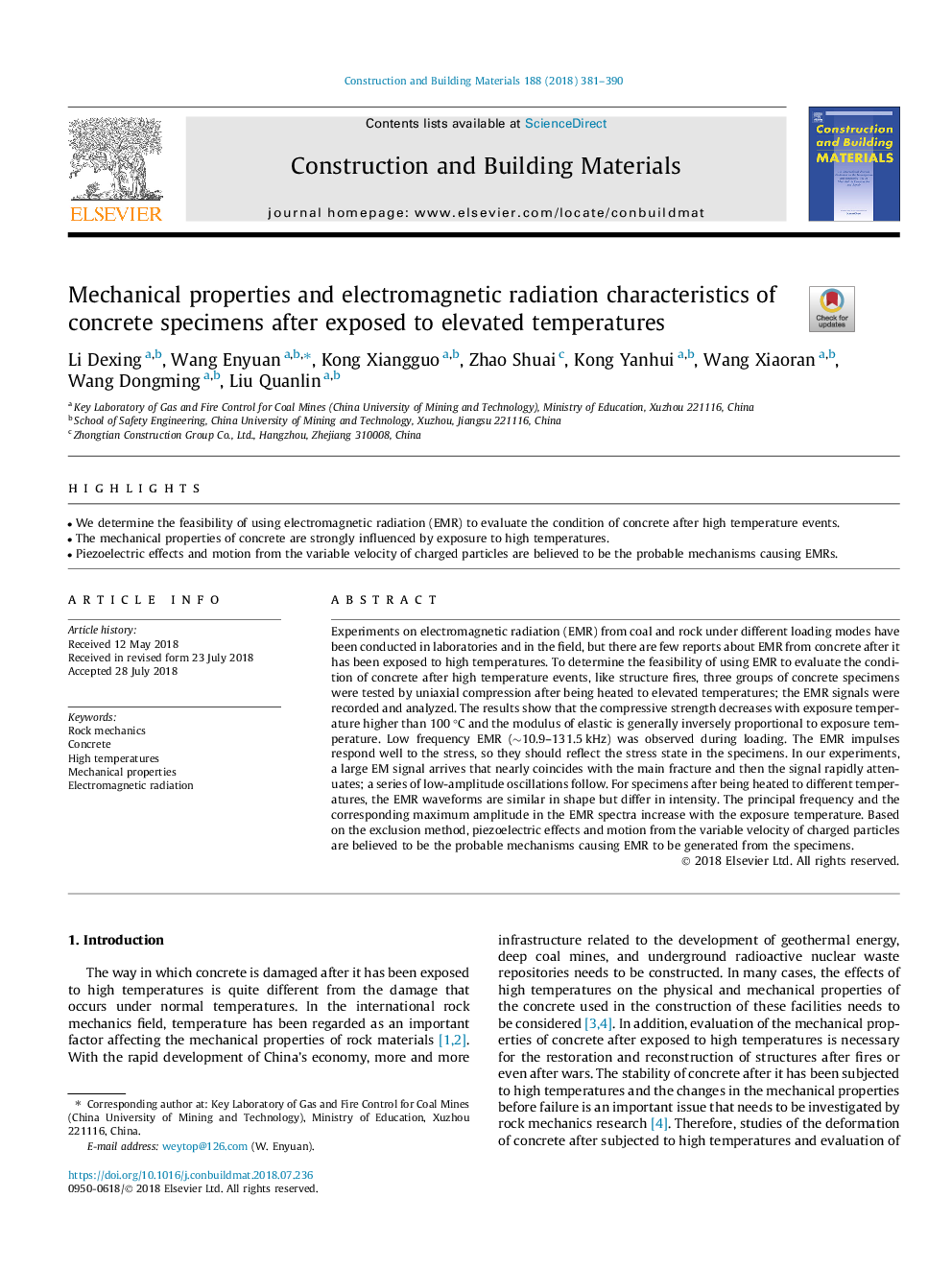| Article ID | Journal | Published Year | Pages | File Type |
|---|---|---|---|---|
| 8947078 | Construction and Building Materials | 2018 | 10 Pages |
Abstract
Experiments on electromagnetic radiation (EMR) from coal and rock under different loading modes have been conducted in laboratories and in the field, but there are few reports about EMR from concrete after it has been exposed to high temperatures. To determine the feasibility of using EMR to evaluate the condition of concrete after high temperature events, like structure fires, three groups of concrete specimens were tested by uniaxial compression after being heated to elevated temperatures; the EMR signals were recorded and analyzed. The results show that the compressive strength decreases with exposure temperature higher than 100â¯Â°C and the modulus of elastic is generally inversely proportional to exposure temperature. Low frequency EMR (â¼10.9-131.5â¯kHz) was observed during loading. The EMR impulses respond well to the stress, so they should reflect the stress state in the specimens. In our experiments, a large EM signal arrives that nearly coincides with the main fracture and then the signal rapidly attenuates; a series of low-amplitude oscillations follow. For specimens after being heated to different temperatures, the EMR waveforms are similar in shape but differ in intensity. The principal frequency and the corresponding maximum amplitude in the EMR spectra increase with the exposure temperature. Based on the exclusion method, piezoelectric effects and motion from the variable velocity of charged particles are believed to be the probable mechanisms causing EMR to be generated from the specimens.
Related Topics
Physical Sciences and Engineering
Engineering
Civil and Structural Engineering
Authors
Li Dexing, Wang Enyuan, Kong Xiangguo, Zhao Shuai, Kong Yanhui, Wang Xiaoran, Wang Dongming, Liu Quanlin,
